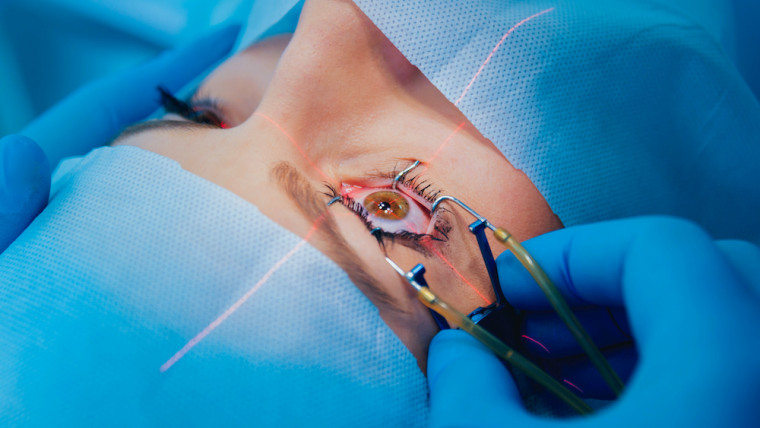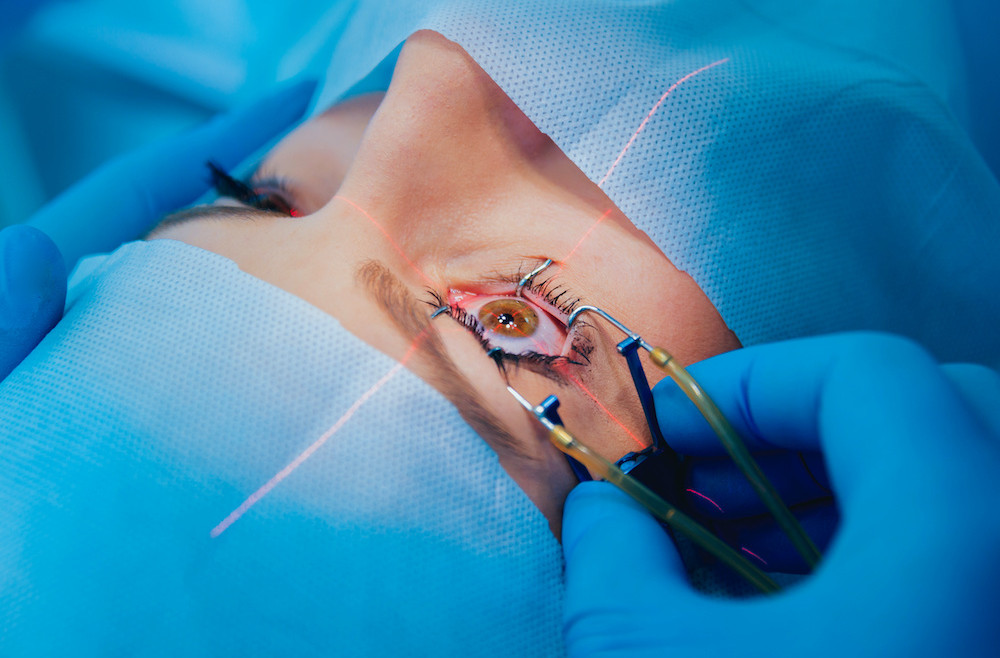
Firstly, we would like to clarify that there is currently no surgical treatment that can stop the advancement of myopia (short-sightedness). Therefore, the treatment aims to correct the refractive error (the number of dioptres the patient has), once it is stable, and thus reduce or, in many cases, avoid dependence on glasses.
There are also surgical techniques that prevent or treat the complications of myopia magna, such as retinal tears, neovascular membrances, cataracts or retinal detachment.
In terms of refractive error treatment the elimination of dioptres, surgery will greatly depend on the degree of myopia and the characteristics of the cornea.
Simple myopia, (less than 6 or 7 dioptres) can usually be treated with laser surgery which modifies the surface of the cornea in a very simple way.
With higher degrees of myopia, the changes caused by the laser might put the structural integrity of the cornea at risk because of the high number of dioptres to eliminate. For this reason, after an exhaustive feasibility study, we should opt for other surgical techniques that do not change the corneal structure.
These techniques involve intraocular lens implants.
There are basically two types of intraocular lenses:
- Phakic or ICL lenses: These lenses are similar to contact lenses. They are smaller in size and they are placed on the inside of the eye on the surface of the crystalline lens, behind the pupil, instead of on the cornea like the conventional contact lenses that we all know.
- Lenses that substitute the crystalline lens: These lenses are a similar size to those above and are put in place of the crystalline lens, that is to say, they replace them. The surgical technique used to implant these lenses is the same as the technique used in cataract surgery. For this reason, they are implanted in older patients whenever they have cataracts or are close to having them.
On the other hand, as mentioned before, there are surgical techniques that do not aim to correct the dioptres but rather treat the possible complications of myopia magna, such as:
- Laser photocoagulation in the case of retina tears.
- Intravitreal injections in the case of neovascular membrane hemorrhages.
- Vitrectomy in the case of haemorrhages, retinal detachment, or macula problems.
WHEN IS THIS TREATMENT INDICATED?
As intraocular implant surgery does not stop the advancement of myopia, it must be performed when the myopia is stable when we think that it will not increase significantly. For this reason, where high myopia with a more prolonged development is concerned, it is usually performed over the age of 25, provided no changes in the prescription have been detected in the previous year.
Does this mean that your myopia will definitely not increase after the operation? The answer is no, but the likelihood that it continues to advance is much lower than in younger people who get the same operation.
Phakic or ICL lenses are normally implanted under the age of 40 given that it is important to respect the role of a crystalline lens which works properly until this age.
From the age of 50, the crystalline lens is not able to focus on nearby objects like it used to. For this reason, an ICL implant does not make much sense and it would be more appropriate to extract the crystalline lens and implant a lens to substitute it, with the additional advantage that if we implant a multifocal intraocular lens, we can also correct presbyopia, which also exists at this age.
HOW IS IT PERFORMED?
The phakic lens or ICL implant is a relatively simple surgical technique performed under local anesthesia and involves making a small incision in the periphery of the cornea as the entry point for a cannula where the lens is injected. It subsequently unfolds behind the pupil and will settle properly on the surface of the crystalline lens, signaling the operation’s completion.
In the case of lenses that substitute the crystalline lens, this operation is also performed under local anesthesia, and just like cataract surgery, the nucleus of the crystalline lens should be aspired, leaving its surrounding capsule ready for the insertion of the intraocular lens, this time inside the crystalline lens capsule itself and not on top of it, as we would do with the ICL implant.
RESULTS
Visual recovery is practically immediate, although for the first few hours your vision might be slightly blurry because of a minimal inflammation of the entry incision, but it recovers in a short time.
The visual results are excellent and are comparable to wearing glasses or contact lenses. The precision of the correction is usually very good, in most cases the residual error is lower than the average dioptres.
POSSIBLE RISKS
Although the probability of complications with this kind of operation is very low, under no circumstances are you exempt from them.
The possibility of an infection is latent in any surgery, although due to the little manipulation required in this surgery and as it is a very short operation (less than 10 minutes), the incidence rate of infections is even lower than with cataract surgery, in other words, unlikely.
Depending on the characteristics of each patient, greater postoperative inflammation in one eye than the other cannot be ruled out meaning functional recovery may take longer although, in general, there are no long-term consequences.
The eye with the higher level of myopia is more likely to suffer retina complications, a problem that a lens implant cannot solve.
A myopic patient is more likely to suffer cataracts at a younger age than the public. Wearing a phakic lens may even accelerate their appearance in a small percentage of cases, which would, in the future, mean they must change the phakic lens for a crystalline lens substitute lens, which would correct their myopia, as we stated before.
PROFESSIONALS WHO PERFORM THIS TREATMENT
Prof. Rafael I. Barraquer
Dr. Juan Álvarez de Toledo Elizalde
Dr. Marinka Kargachin
Dr. Jose Lamarca Mateu
Dr. Milan Pešić
Dr. Paola Sauvageot

